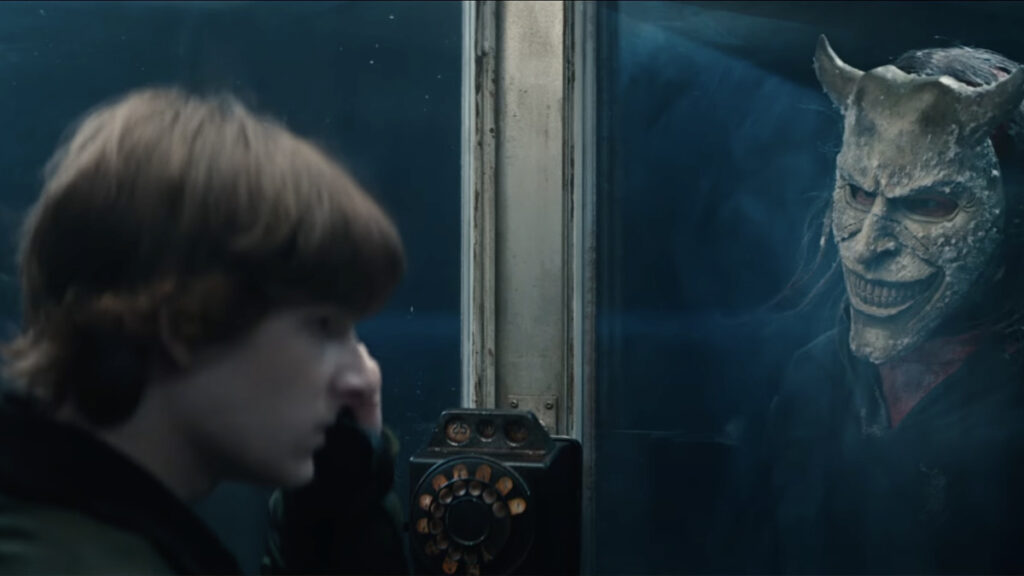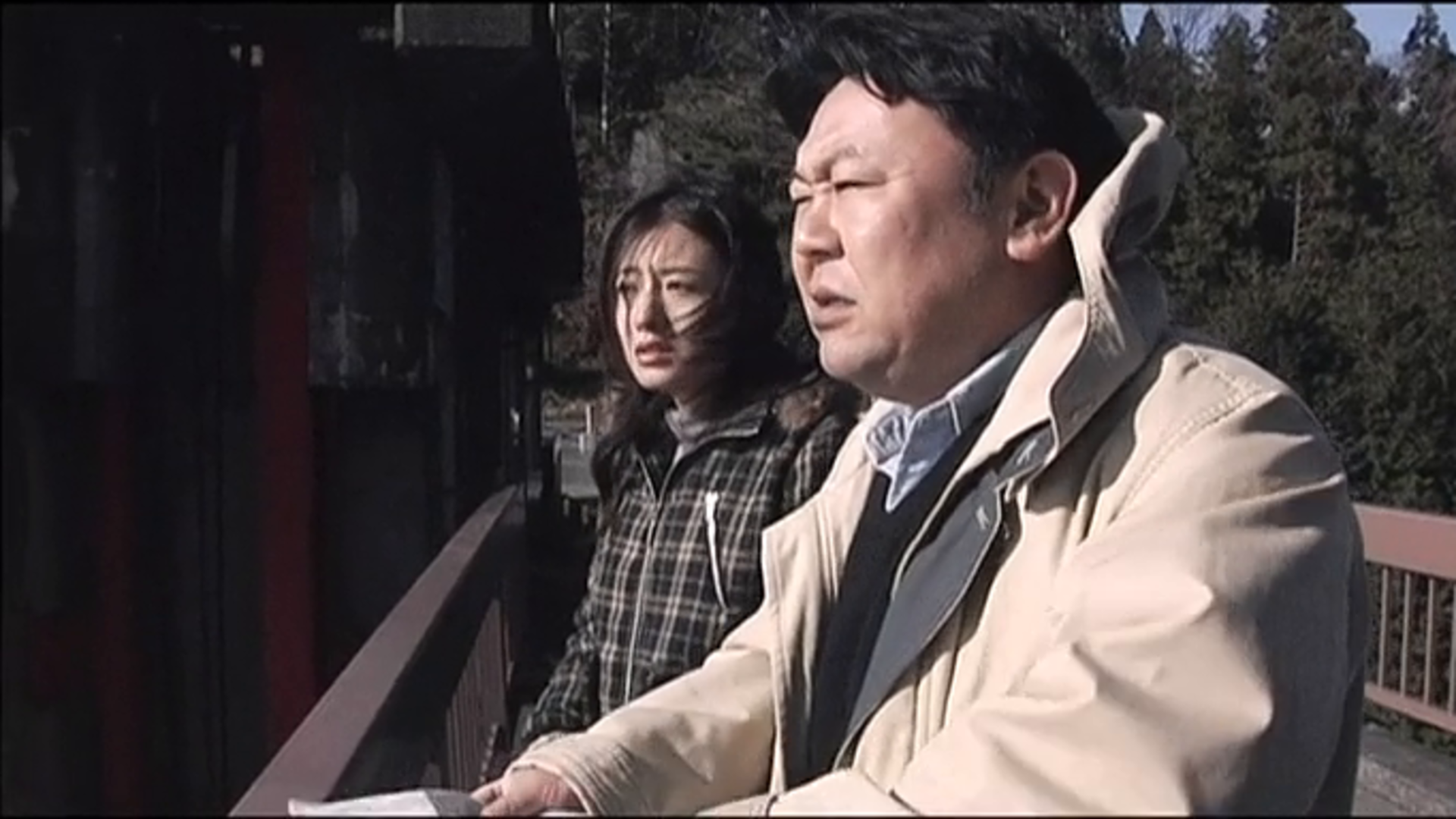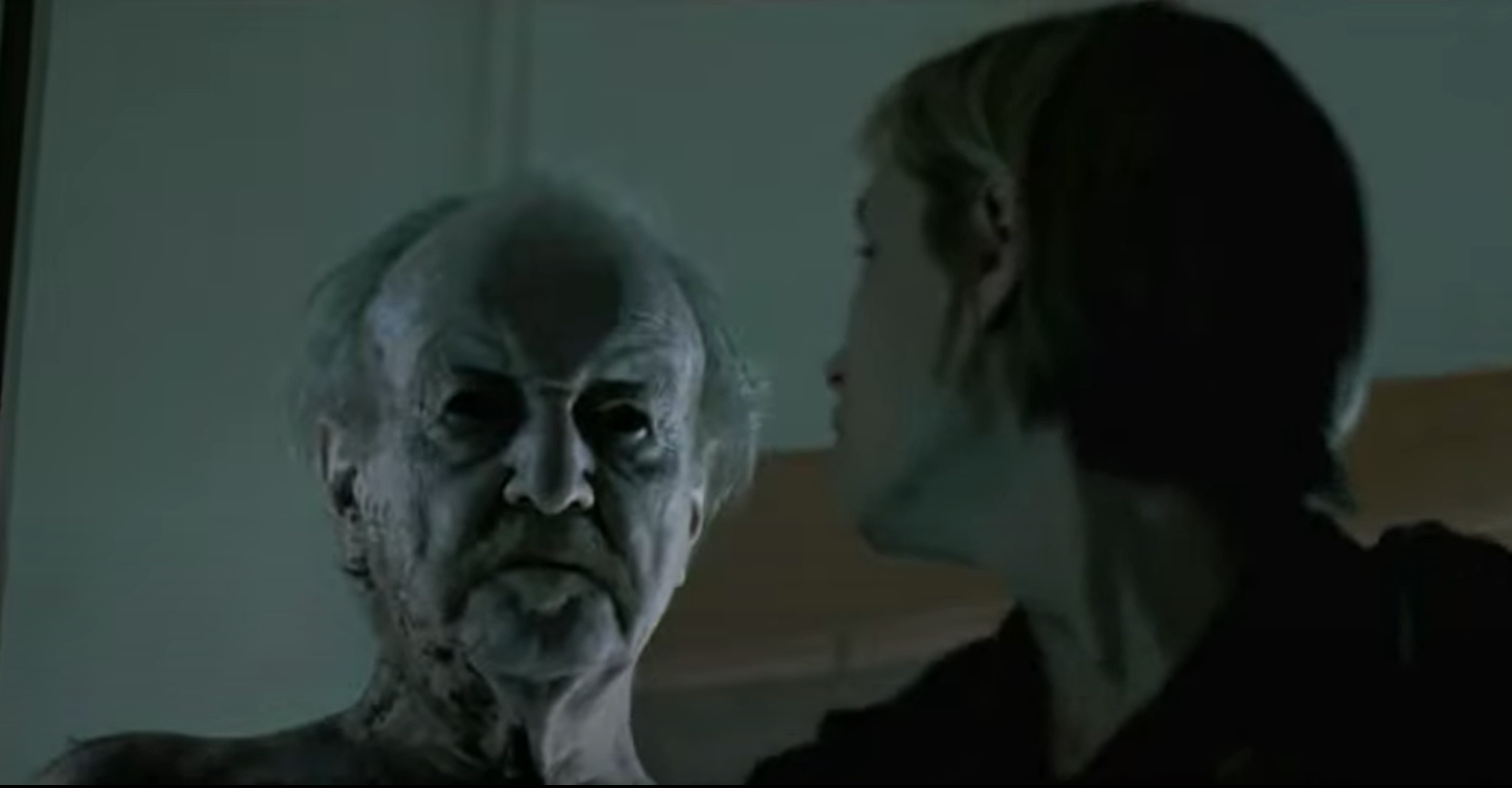Reviews
‘Black Phone 2’ Review: Colder, Meaner, Faster—But Is It Better?

Black Phone 2 takes less of a step and more of a leap away from the first film that was brought to the silver screen three years ago. There’s no Joe Hill short story to serve as the bones for this one, leaving a mostly blank canvas for the dream team of Scott Derrickson and C. Robert Cargill. It’s clear, from the first frame to the last, that they took that opportunity to paint an absolutely wild departure.
Embracing the Slasher Horror Vibe
This film feels like more of a slasher now, but more importantly, it’s a horror film screaming about how much it loves slashers. High impact, violent, relentless killers. The slasher films with big one-liners, crazy bloody effects, and a strong villain at the helm. Those expecting the slow rolling, nostalgic atmosphere of the ghost story we got before are in for a much faster paced surprise—even with the longer runtime the second installment boasts, it’s just beat for beat quicker.
Despite his best efforts to ignore ringing calls from spirits in need, Finney Blake can’t forget what happened. He can’t block out the experience he had at the hands of the notorious serial killer known as The Grabber. His sister Gwen can’t ignore it either, as her psychic abilities send her into lifelike dreams night after night, where dead children lost to the ice call for help. The brother and sister duo are drawn back into the hazy and surreal world of the dead as they try to solve who these mysterious, frostbitten ghosts are– and end up encountering The Grabber once more. While the face is familiar, the man who tortured Finney is not the same spirit that left his body. In fact, he’s more dangerous than ever.
Black Phone 2’s Ethos is More, More, More
Everything about Black Phone 2 is “more” for that matter. It’s inherently riskier just because of how different it is, but the whole ethos of the film is to give you more. It’s bolder (and colder) with its setting, swapping out the suburban trappings of the original for a youth camp buried in a snowstorm. You might expect something reminiscent of The Shining given the Stephen King energy present throughout the first film, but you’ll end up mostly getting an experience that feels like the later Nightmare on Elm Street films; DNA from a bevy of slashers made its way into this one, but Black Christmas and Friday the 13th stood out to me as notable ancillary inspirations.
And while it’s not a slasher and more of a creative predecessor to The Black Phone, I do have to note that we’re so back in terms of Sinister vibes. Fans of that film will be pleased with how these ghosts evoke the eeriness of that film’s children. The dream sequences here also capture the haunting nature of the Super 8 segments Sinister is notorious for.

Ethan Hawke’s Terrifying Return as The Grabber
This film is also meaner and bloodier than its predecessor, featuring more gruesome effects and a more aggressive iteration of our killer. The Grabber, played by a returning Ethan Hawke, is unfettered by a human form. He dances through his plot for revenge with sadistic glee, terrorizing the Blake siblings in more creative ways. Hawke sells it, and he sells it hard. I must say he is the highlight of the film. He definitely hits harder now as a spirit driven by revenge, fueled by nothing but a short stay in hell and a burning lifetime of rage. It’s an irreverent rampage at points as it plays with this weightless aspect of the character, especially in its climax, but it understands what it wants to do with that and is ultimately entertaining for it.
An Awkward Transition From Thriller To Killer
Black Phone 2 is definitely quicker, especially in its editing and camerawork, the former of which is especially energetic. Though, it feels like there almost isn’t enough time to breathe as we jump between reality and the dreaming world of nightmares it presents us.
But does all of this combined, being colder, faster, and meaner, really make it better? I don’t think it does, but the films are so tonally different that it’s like comparing apples to oranges to say this is outright worse. It is still more reliant on the story and emotional weight of the previous film while being divorced from it in terms of spirit. What results is an awkward transition.
The script’s edges are jagged. There are several characters who really only have a presence in the plot as observers. They’re here to sit back and watch our main cast solve the mystery, and they feel squandered in that way. There are moments where “show, don’t tell” has been thrown to the gutter, and some of the dialogue is very corny in that regard. It’s not helped by the few weak performances that are in the film; the opening of the movie comes with a borderline groan-worthy one. Attempts to recapture some of the charm that came from Gwen’s creatively foul-mouthed dialogue in the first film are also hit or miss.
McGraw and Thames Are Back And Better Than Ever
Most of this is saved from sinking by the emotional ballast that returning leads Mason Thames and Madeline McGraw provide. The two have shown significant growth as young actors over just a few years, in a way that is very fun to see. They manage to make something compelling out of the material they’re given, especially Thames. He portrays Finney’s strained relationship with his sister and deftly attempts to block out the pain. The characters have grown with the actors and vice versa, breathing a unique life into their roles.
Ultimately, Black Phone 2 does succeed: it brings us an iconic villain fully grown into his mask and puts him center stage of a fresh new supernatural slasher, even if it’s a tonal shark jump in the process. It’s a scare-packed ride that eschews the more quietly thrilling elements of the original to play around in the bloody and the bizarre. And while it has its low points from shaking off the first film’s subtlety, the movie has enough creativity and strong performances from its leads to land it as one of the better horror offerings this year has served.
Reviews
‘Noroi: The Curse’ Review: A Paranormal, J-Horror Mind-Trip

The found footage sub-genre has had numerous iterations, from mockumentaries to home movies to literal found footage. Since the Blair Witch Project’s release, countless duplicates have spawned. Many are very good, while others are yawn-inducing, with nauseating shaky cam and irritating characters, and very little is as impactful as the original. However, one post-Blair Witch found footage film rises above the ranks as a J-Horror masterpiece.
Noroi: The Curse A J-Horror Masterpiece
Directed by the legendary Kōji Shiraishi, Noroi: The Curse follows paranormal researcher Masafumi Kobayashi. At the start, we learn he has disappeared after his house burned down, but his footage survived. The movie unfolds as the documentary Kobayashi was making. Horror fans know the drill, but even die-hards will be on edge, facing eerie rituals, surreal debauchery, and a conspiratorial nightmare.
Noroi may possibly achieve the status of both the most effective found footage horror film of all time and the most effectively terrifying J-horror film.
It is not an exaggeration when talking about how f’ing scary this movie is. Like this thing is really, really scary. Yes, countless films and literature have done the whole, “the filmmaker or writer died right after this” trope, dating all the way back to Lovecraft and Stoker. Few actually exceed it the way this one does.
Unrelenting Dread and a Haunting Tone
Tonally, the movie induces dread like none other, only somewhat akin to films like In the Mouth of Madness. Watching this filmmaker’s journey truly feels like watching someone descend into their hopeless end. We as the audience, know from the start that this is not going to have a happy ending, and there is not a second we aren’t reminded of it. Characters that are close to the rituals’ mysteries are killed left and right, and ghosts haunt every frame. There is not a second of comfort to be found.
The darkly analog, 2000s tone makes no shot safe, and even scenes simply in people’s homes feel unloving and cold, especially in those last few chilling moments. Notes of Silent Hill echo throughout, with similar visuals of small, vacant, country towns, strange cults, and uneasy surrealism. Folk horror, supernatural horror, psychological dread…plus, even some body horror is thrown in for good measure, with this movie featuring some of the most terrifying, uh…“children” ever seen in movie history.
Rich Lore and World-Building in Noroi
Let’s be real. As much as we all love the stylistic ambiguity of arthouse horror films, nothing beats a movie packed with a ton of lore. Noroi welcomes viewers into some brilliant world-building, letting them descend with the protagonist down a terrifying rabbit hole.
It would be somewhat of a disservice to spoil the intricacies of the film for those who haven’t seen it yet. That, plus any Noroi fan can tell you that trying to create a succinct timeline for the events of this movie would leave you looking like that picture of Charlie Day from It’s Always Sunny at the conspiracy corkboard.
That being said, the mystery concerns a small town in rural Japan, which was home to some terrifying rituals. The ritual involves summoning the demon Kagutaba, one of the most malevolent entities in movie history. This demon corrupts people who come close to his truth. Suicides, hangings, possessions, fire, and total madness seem to curse anyone who comes close to the beast’s power. And while this demon is at the center of the mystery, the lore and history of the supernatural in the film’s universe is endlessly more intricate…
A Lesson for Found Footage Filmmakers
Shaky cameras, endless profanity, and lame effects… There are countless reasons audiences have grown to despise found footage horror. All reasons that, despite the love of the subgenre found in this writer’s heart, are understandable. The fact is, no one will actually believe found footage anymore, with the internet at our sides, any trick or hoax will instantly be debunked in the modern era. Not only that, but found footage movies make one grave mistake: having their only personality trait be found footage.
Noroi is, first and foremost, a damn scary movie. It’s a layered puzzle box of supernatural dread in found footage form. This story could have been told traditionally. However, using found footage adds a surreal layer of immersion, rather than pitching itself as just a found footage horror.
This is the true mistake of found footage schlock, relying entirely on gimmick. Now, horror fans do love a good gimmick or immersive story, but there needs to be a reason for it. This movie has its gimmick, but it is so much more of a nightmare beyond that. Filmmakers can absolutely get by with cheaper budgets to tell these types of stories. That being said, though, the story must always come first.
Celebrate Noroi’s 20th Anniversary This Halloween
This Halloween season, check out one of the most forgotten, overlooked nightmares of the 2000s, and celebrate its 20th anniversary.
Noroi: The Curse is available for streaming on Shudder.
Reviews
‘The Innkeepers’ (2011) Review: Ti West’s Horror Gem

A little over a year ago, I had the opportunity to catch a new film that reminded me of one of the films that sparked my interest in analyzing films in the first place. Sweet Relief was a fun and well-crafted modern mumblegore film that brought Ti West’s The Innkeepers back into my mind. I first watched The Innkeepers shortly before leaving for college, and I was stunned by how incredibly effective it was. To celebrate Dark Sky Select’s 4K steelbook release of The Innkeepers, I decided to give the film a well-deserved rewatch.
The Innkeepers: A Haunting Ghost Story
The Innkeepers follows Claire (Sara Paxton) and Luke (Pat Healy), the last two employees of The Yankee Pedlar Inn. Claire and Luke find themselves working during the hotel’s last week in operation. They also happen to be amateur ghost hunters. Due to the small number of guests, Claire and Luke have some time to put their ghost hunting tools to good use. As the hunting begins, the terror checks in. Is there more to this ghost story than meets the eye?
Before his flashy slasher trilogy, Ti West’s films had a darker, more personal feel to them. After wowing audiences with his satanic panic masterpiece The House of the Devil, Ti West tackled the true terrors of the supernatural. As much as I adore Ti West, this would be his last film that perfectly balances style and substance. Obviously, the goal of an artist is to grow and transform as a filmmaker, but this feels like West’s last intimate film.
Mumblegore Dialogue: Natural and Grounded
The Innkeepers keeps with the mumblegore-like dialogue West was so great at creating. There’s still that improvisational, but naturalistic, feel to their words. And while the situation becomes extraordinary, the dialogue still feels grounded in reality. Somehow, for a 2011 film, West finds a way to competently direct actors in saying the words “epic” and “failblog”. It’s the exposition of the film that truly sets it apart from others like it. While talking with a child in the lobby, Claire reveals the backstory of Madeline O’Malley and her untimely suicide in the hotel. It’s a small moment that could easily be a throwaway detail to provide the audience with the necessary backstory. But it’s Sara Paxton’s performance that sells the scene.
Speaking of, both Sara Paxton and indie darling Pat Healy absolutely tear it up on screen. Sara Paxton’s performance is reserved and lived in. She carries herself awkwardly, with little self-confidence, but still finds a way to be charming. Indie darling Pat Healy chews up the scenery with his Tintin-like faux hawk and a Red Bull-infused high energy. Not only do they steal their respective scenes alone, but they also play off each other like a fast-paced tennis volley.
Supernatural Horror Done Right
Ti West’s magnum opus handles the supernatural element in a much cleaner, fascinating way than most ghost films. The slow pace highlights the mundanity of working-class life that quickly becomes tense through the creeping terror of Madeline O’Malley and her growing cohorts of terror. There’s a certain unbalanced feel to the film’s three-act structure that lends an air of authenticity to it. Whereas most supernatural films feel the need to do more, The Innkeepers understands that it’s okay to do less. It’s how the scares are delivered that sets this film apart.
If you haven’t seen The Innkeepers, then you’re truly missing out on one of the subgenre’s greatest hits. That being said, I don’t think this film is for everyone. Ti West asks a lot from his audience, and I can understand that some people won’t want to go with him on this ride. It’s talky and demands full attention. But if you’re willing to sit with the film and let it work its magic, you won’t be disappointed.























